A Q&A with Lena Yokoyama on celebrating illustration
by Lena Yokoyama, Illustrator
With National Illustration Day fast approaching we talk to the illustrator behind the look of this new campaign. Illustrator Lena Yokoyama shares the inspirations behind the National Illustration Day logo, her love of wobbly ink lines and how she started illustrating.
What drew you towards becoming an illustrator?
I’ve always been a drawer, ever since I can remember. Growing up between different cultures and different languages, I always felt that drawing is a form of communication that is very universal and doesn’t require you to translate for different audiences.
I didn’t realise that one could actually draw for a living though until much later in life. I did my art foundation at Camberwell College of Arts, and once I had realised that Illustration can be an actual career, I had my heart set on it and I’ve honestly never looked back.

Do you remember your first illustration?
Hmmmmm, I don’t really remember a single first illustration but if I’m thinking back to my childhood, I remember being a very fanatic card maker. I’d make illustrated cards for every member of the family, for every possible occasion.
I think this might have been my first case of actually illustrating as opposed to just drawing for fun. In this definition I’m thinking about having worked on a self-given brief, with a deadline, a purpose, colour schemes, an audience and a certain degree of stress and time-pressure. In my mind, that sounds a lot like my adult experience of being an illustrator now.
How would you describe your illustrative style?
I would describe my style as an optimistic mix of colour, wobbly ink lines, and curious personalities. I don’t really have a singular approach when making art but everything mostly starts with ink on paper. From there I add texture, different printmaking techniques and digital colouring, all resulting in compositions made of overlapping planes in limited colour schemes.
Reoccurring themes in my work are often to do with translation, language and diversity, all inspired by my own multi-cultural upbringing. I like to represent a variety of shapes, sizes and colours, merging my experience of the world with the imaginary.
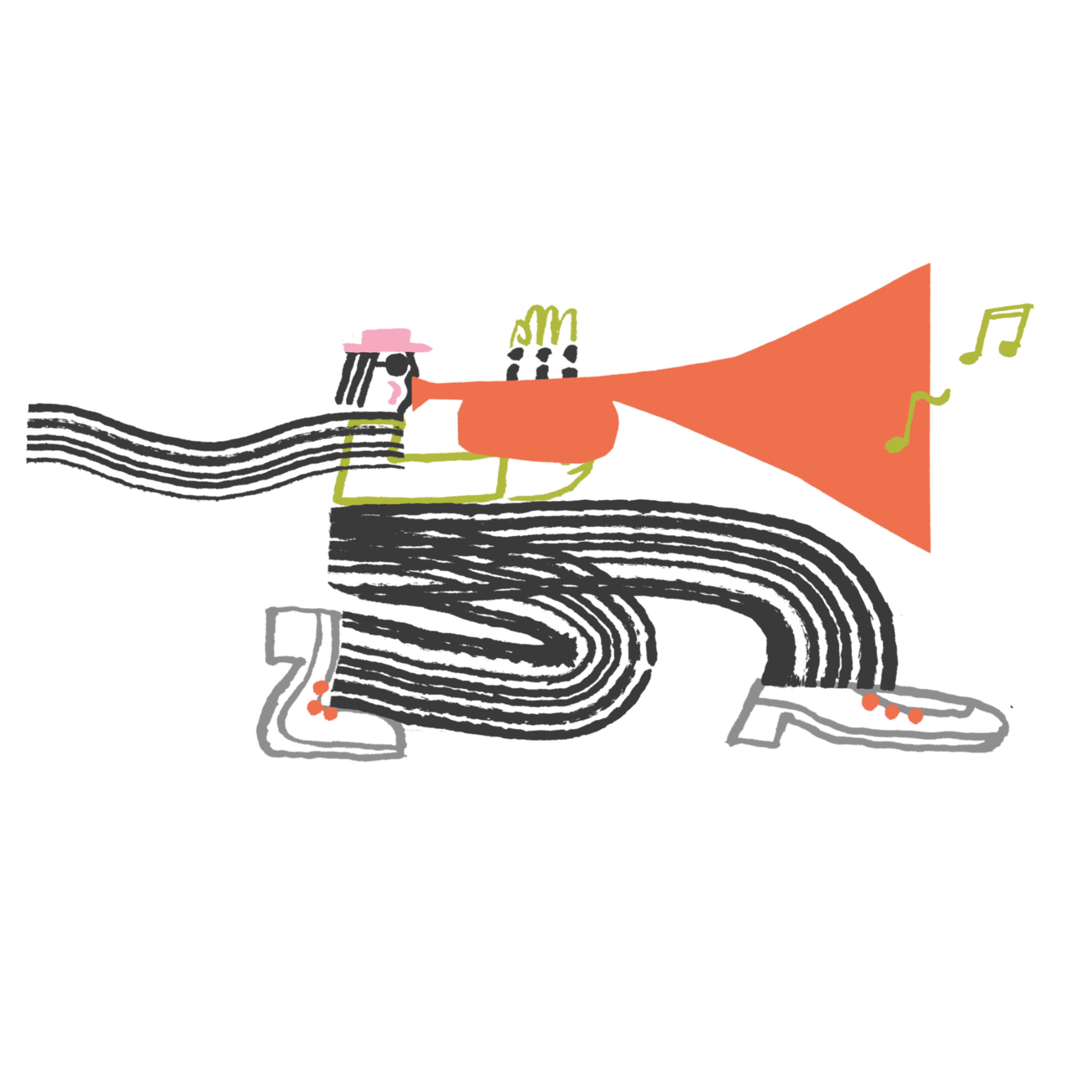
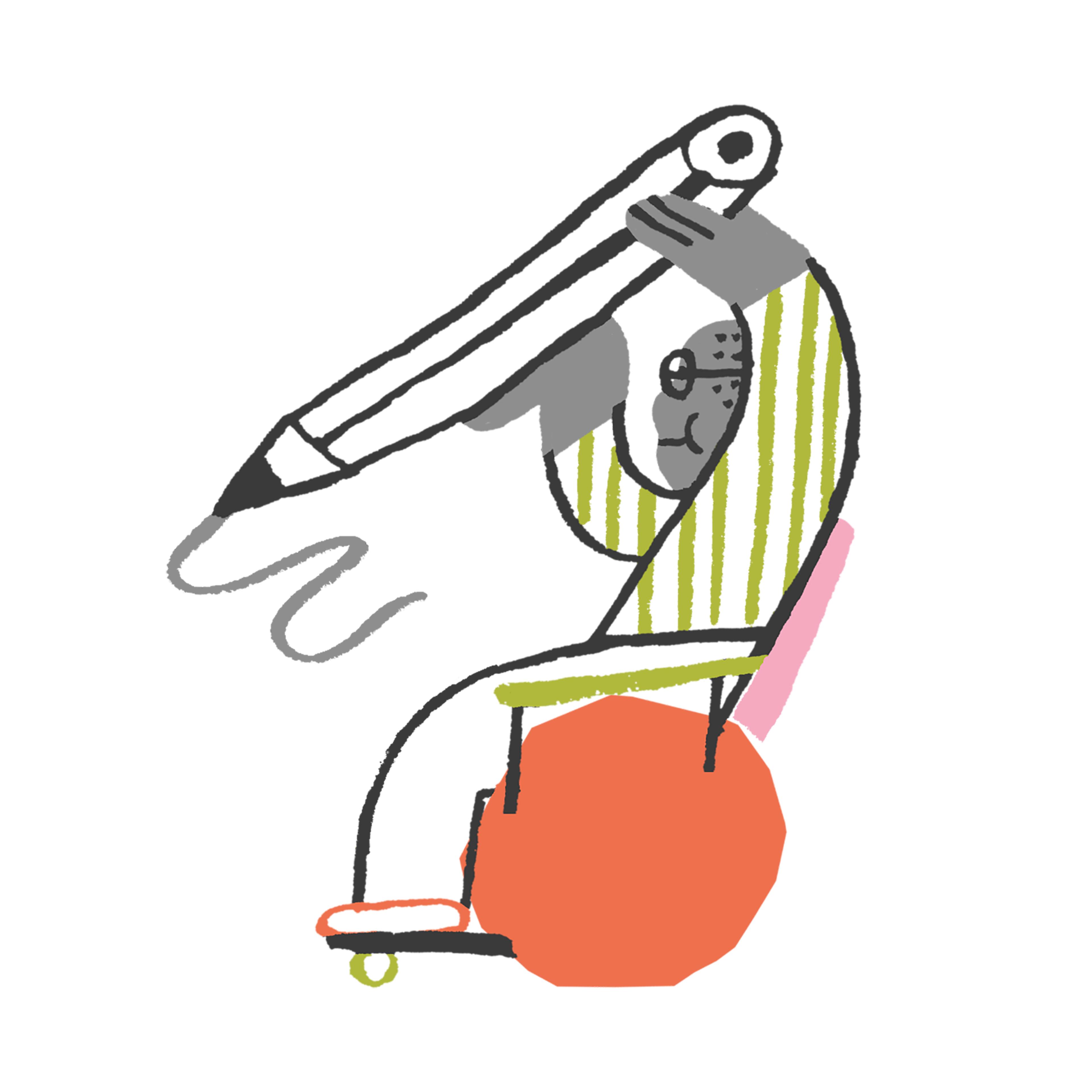
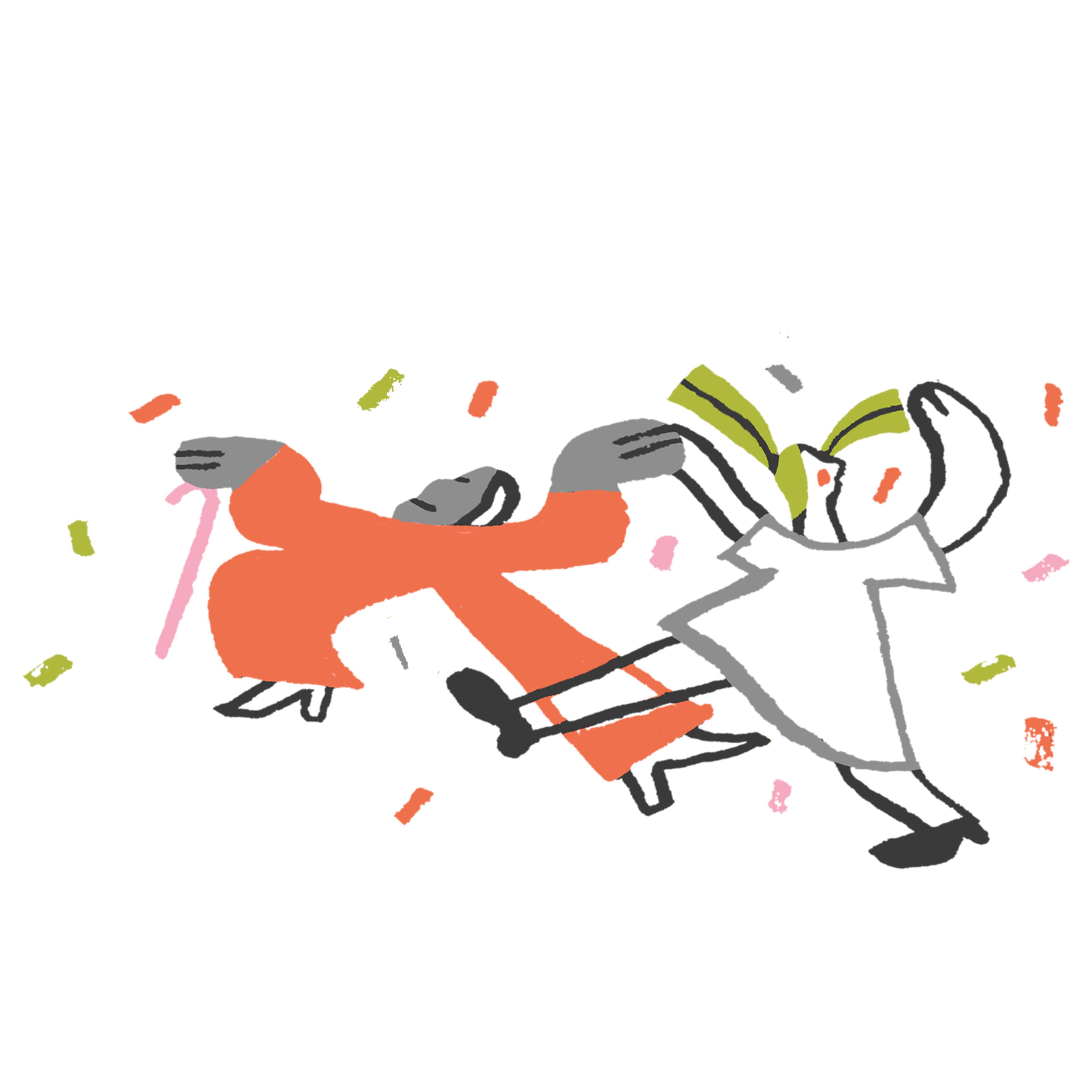
What kind of materials and methods do you use to create your illustrations?
For my sketches I use pretty much any material I have at hand. Sometimes it helps me to come up with new shapes and line qualities when combining random materials like ink, felt tip pen, pencil or collage. Once I have a an idea or a sketch down, I usually move on to ink, for which I use Japanese Sumi brushes and water soluble ink on Somerset paper.
Even though, my drawings are usually scanned in and mostly submitted digitally, the paper I work on has a big influence on the final piece. Not only does working with high quality paper make me feel a lot more precious about the drawings, it also affects the way the ink soaks into the paper and therefore how the lines look. It’s just a small nuance that maybe only I notice, but it’s become a big and essential part of my process.
After scanning my work, I usually continue adding colour on Procreate. It’s often a back and forth between the iPad and the paper, when often deciding that I need more ink layers midway through a drawing. Sometimes I cut out shapes of paper which I also scan and add to the digital composition. It’s never a straight forward process really, most drawings involve multiple attempts and my desk usually looks accordingly messy.

You have created the first National Illustration Day logo and identity, was it a fulfilling project to work on?
This has been a lovely project to work on. The team at the Quentin Blake Centre for Illustration have been the most wonderful and supportive people to work with and I feel so incredibly honoured to be illustrating the assets for this super special day.
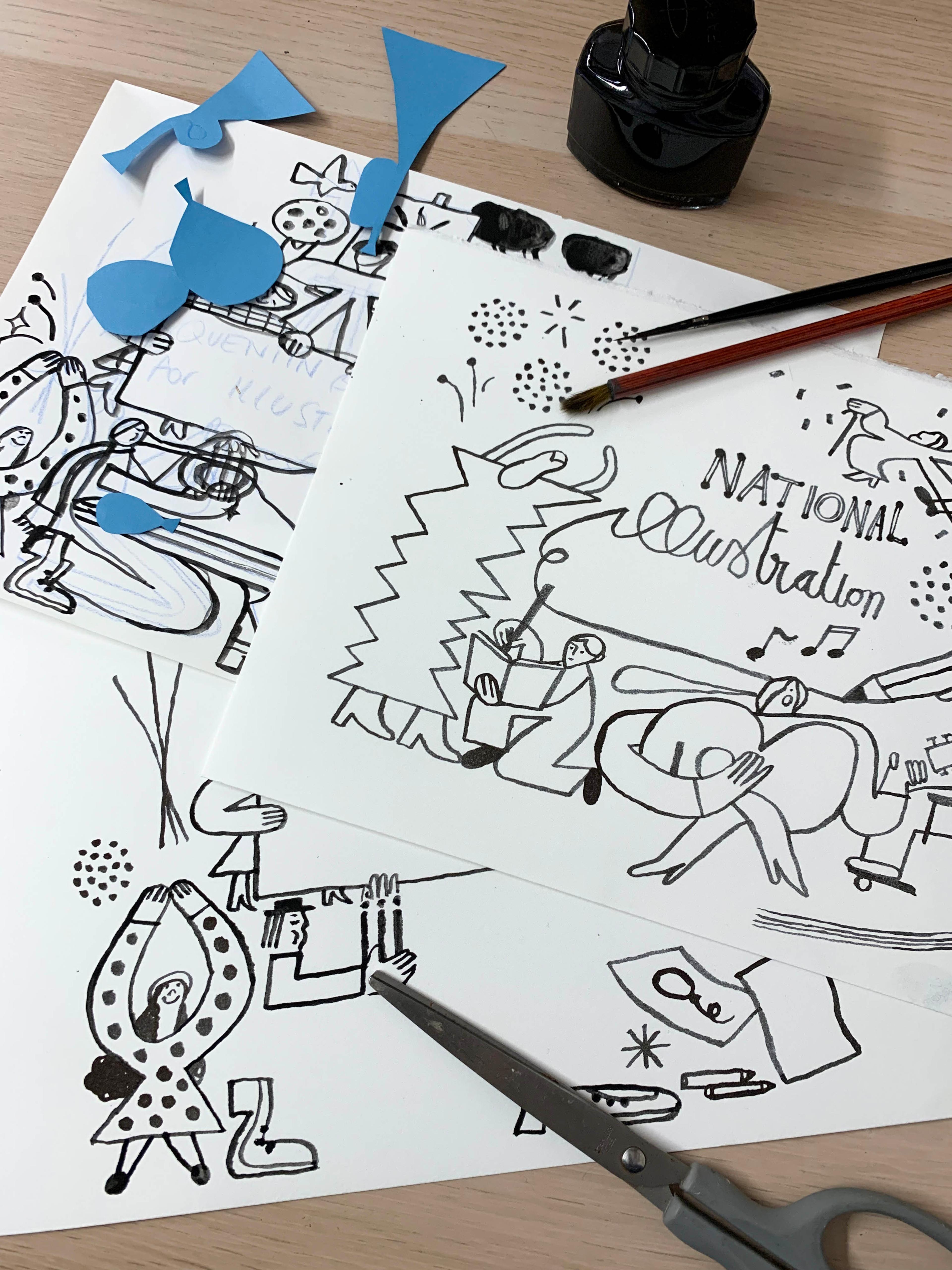

What inspired the National Illustration Day logo illustration?
I’ve been in very close conversation with the Quentin Blake Centre for Illustration, where we discussed including as many celebratory elements as possible. For the logo, I tried to include all elements in a compact way, while still making it fun and playful. I experimented with the lettering, making it purposefully wonky and tilted, drawn through a mixture of hand-written text with ink and pencil.
The colours are chosen from the Quentin Blake Centre for Illustration colour palette, which through its various shades and tones naturally lends itself to communicating ‘celebration’ for this new National day.
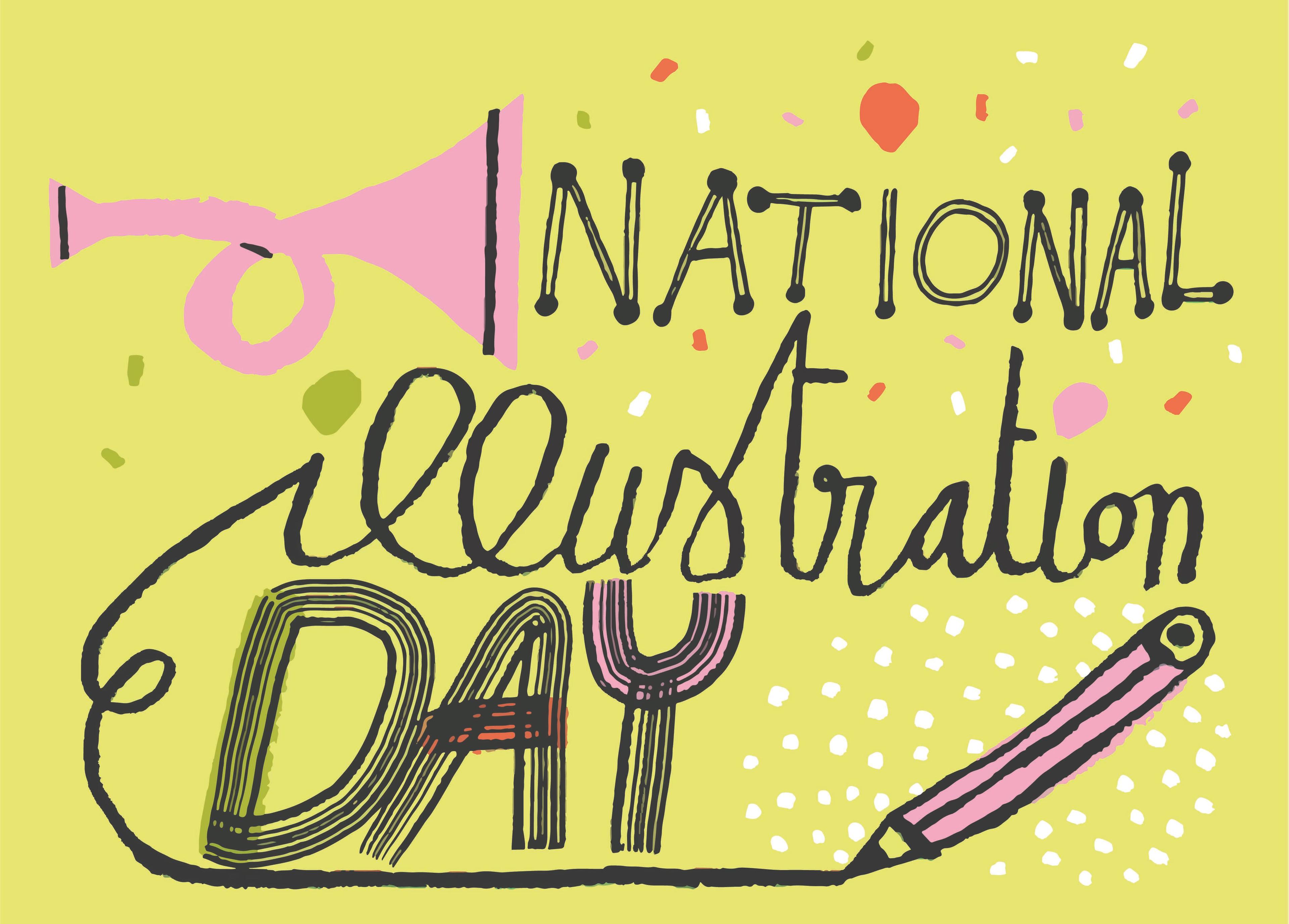
Why do you think it’s important to have a National Illustration Day?
I’m so so excited about Illustration finally getting its very own day to be celebrated in a worthy manner. To me, illustration is an incredible industry to be in, for one because I get to draw everyday, but also because I get to be part of this amazing community, where I’m surrounded by so many talented artists and friends, who never cease to inspire me.
I love talking to fellow illustrators about their work, projects and challenges, and discuss each others different approaches to image creation and idea generation. How amazing to have a day where all these different approaches can be recognised and celebrated.
With the onset of digital technologies and AI, I feel like it’s even more important than ever to honour the artist behind the art. A lot of illustrators are worried about our jobs becoming more and more obsolete, when anyone can just create an illustration through a few clicks. I, however, think that there’s something irreplaceable in a human-made drawing, like all the little nuances, wobbly lines, and imperfections, that add life to an image, which I don’t think a computer can replicate.
Illustration is such a valuable skill and having a day to celebrate this industry and its artist, will help us cultivate this notion even more.
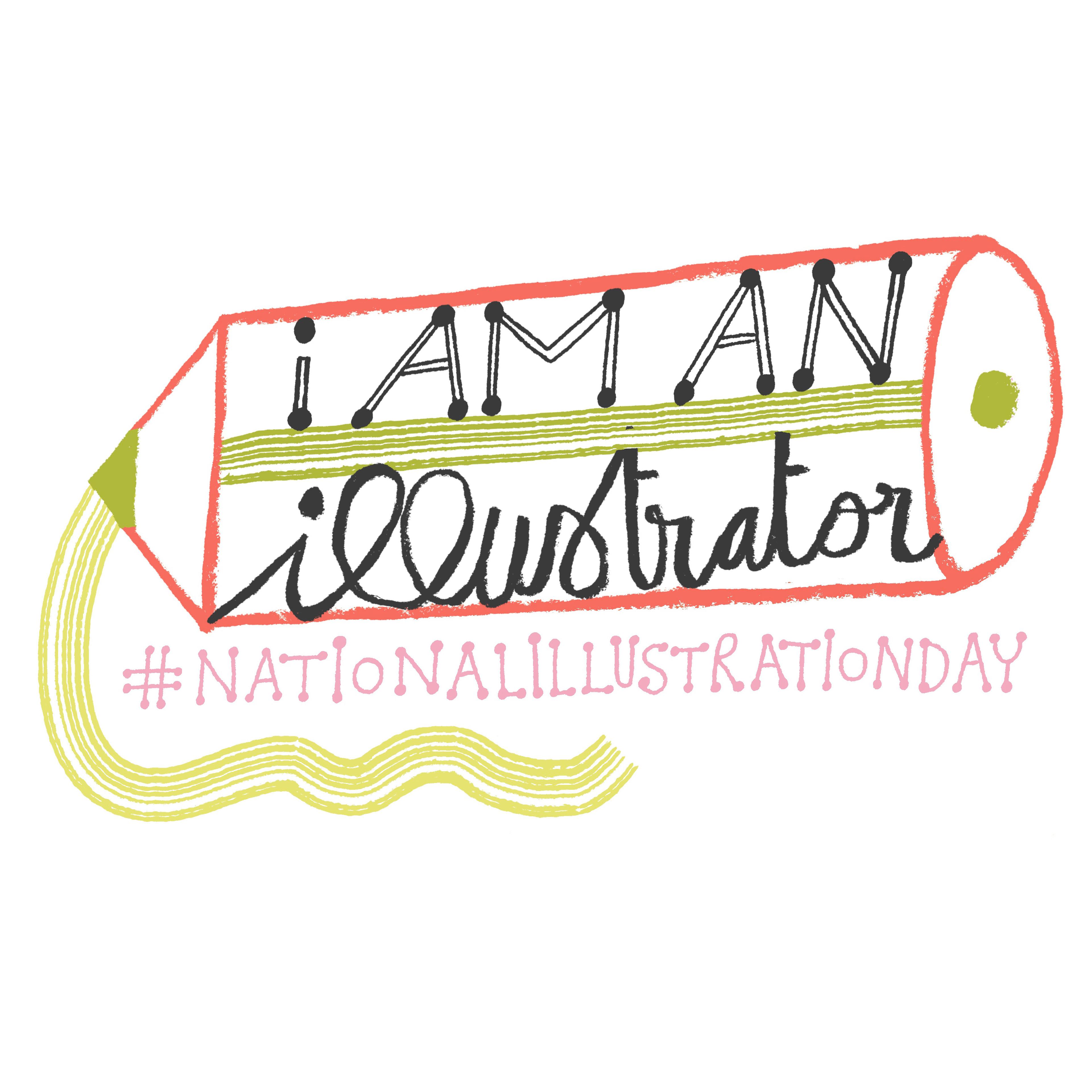
What does illustration mean to you?
Illustration to me is understanding the world and rendering it through my own means. As an illustrator I get to interact with the world daily, be it through commissions, observational drawings or random doodles from my head.
Whenever I’m illustrating someone else’s story or concept, or my own thoughts and ideas, as I’m putting these things down on paper, I’m beginning to actively engage with them and start to understand them. At the same time, I can add my own twists and jokes to the drawings, distort objects and limbs, assign colours to things that wouldn’t usually be seen in those colours and generally just bend the rules to my own needs.
Illustration is like a personal language through which I can listen and understand, as well as speak and communicate. It’s a wonderful means to interact with other people, one that spans all over the world, and has the power to cross cultural and linguistic barriers.
What are you working on next?
The next few months are actually filled with travel, which I’m very excited about. I’m jetting off to NYC straight after National Illustration Day, where I’ll be immersing myself into the New York illustration scene for a few weeks. I’ve got some very talented friends over there who are an incredible source of inspiration to me, so I’m very looking forward to drawing alongside them.
Then, early next year I’ll be in Mexico on an Art Residency, where I’m hoping to develop another personal project. I’ll be focusing on drawing people and nature, within the wider context of language and translation. I’ll try and focus on making larger pieces of work, possibly using ink again.